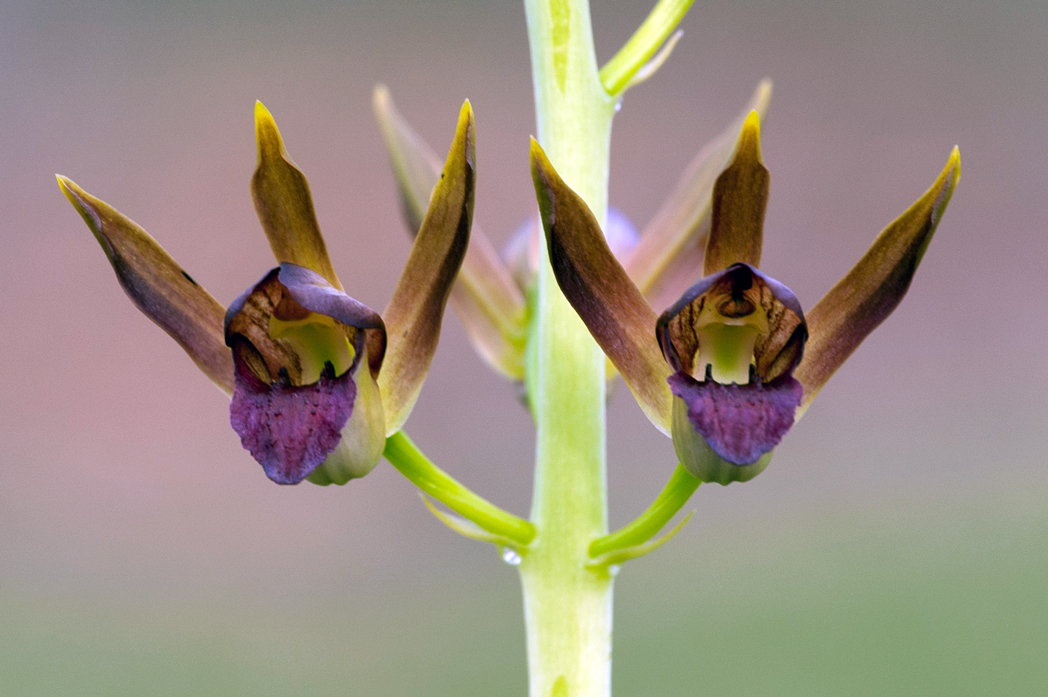Wild coco
Pictured above: Wild coco (Eulophia alta) by Ryan Kitko (CC BY 2.0). Click on terms for botanical definitions. View post as a PDF.
Wild coco (Eulophia alta) is a terrestrial orchid found in hydric hammocks, hardwood swamps, wet flatwoods, marshes and open disturbed sites in Central and South Florida. It blooms from late summer through winter, with peak flowering in fall.
Wild coco’s resupinate flowers are composed of a tubular, pink to burgundy calyx with a textured labellum, and three erect, yellowish-green to reddish-brown sepals. Flowers are bilaterally symmetrical and born on long, terminal spikes. Each spike may produce 20 to 30 flowers or more. Leaves are basal, up to 4 feet long, and strap-like with obvious parallel veins. They bear a slight resemblance to young palm leaves. The root is a tuberous corm. Seeds are born in capsules.
The species epithet alta is from the Latin altus, meaning “tall.” It refers to the tall flower spikes.
Family: Orchidaceae (Orchid family)
Native range: Most peninsular counties from Flagler and Hernando south
To see where natural populations of Flaxleaf aster have been vouchered, visit florida.plantatlas.usf.edu.
Lifespan: Perennial
Hardiness: Zones 9A–10B
Soil: Moist to wet, well- to poorly drained sandy or calcareous soils
Exposure: Full sun to minimal shade
Growth habit: 3’+ tall when flowering
Propagation: Seed
Garden tips: Wild coco is best suited for naturalistic and restoration landscapes, and moist to wet wildflower gardens. The plant will go dormant in spring, but will reemerge when summer rains begin. Plants require little maintenance beyond the removal of spent flowers and stalks. Wild coco may be grown by enthusiasts, but plants are generally not available commercially. It is relatively easy to grow from seed.

